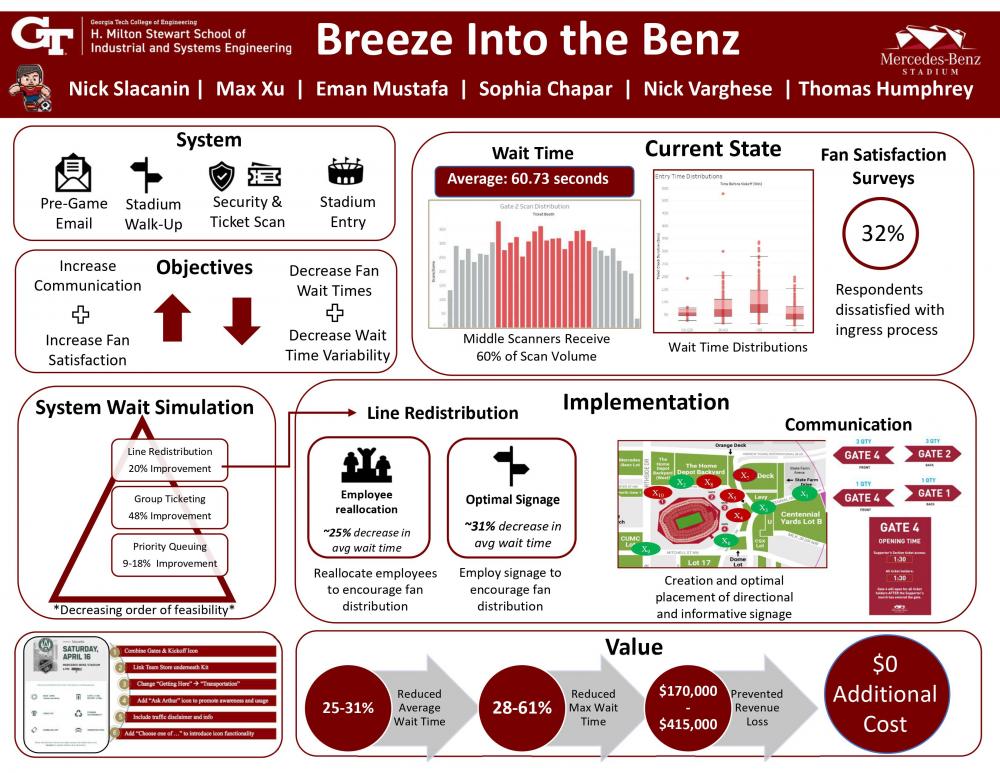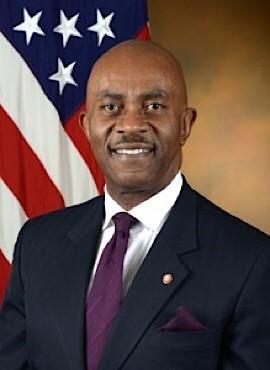Client Context
The Arthur M. Blank Sports & Entertainment (AMBSE) is a subsidiary of The Arthur M. Blank Family Foundation which was founded by Arthur Blank in 1995. The foundation's goal is to promote innovative solutions to transform the lives of the next generation, and has been heavily invested in education, parks and greenspace, youth, and community development. Among AMBSE's multiple components such as the Atlanta Falcons (NFL), Atlanta United (MLS), and the PGA TOUR Superstores, the crowning jewel is Mercedes-Benz Stadium (MBS). Our team worked closely with Mercedes-Benz Stadium, which hosts over 125 events per year including sports events, concerts, graduation ceremonies, etc. The stadium employees nearly 5,000 people and encompasses 62,350 square feet which holds a capacity of 75,000 fans. AMBSE aims to provide the best fan experience in the nation and is focused on achieving that through creating a seamless game-day experience for all attendees. The client is primarily concerned with making the entry process a smoother experience. Reducing the ticket scan time is the top priority as this is one of the first points where fans interact with the stadium, and it heavily influences their perception of the stadium. The client aims to implement solutions that do not interfere with fans' gameday experience during their time at the stadium.
Project Objective
For the current ingress system, fans must go through two processes to enter the stadium: security and ticket scan. Currently, the ticket scan process takes 3-times longer than security scan. The goal is to reduce the wait times and variation for this process, which is on average 60.99 seconds and the upper quartile reaches 3-4 minutes. Upon analyzing the current ingress system, the team discovered opportunities for improvement in the communication that fans receive. Firstly, the emails that are sent to each fan have opportunities for improvement via enhanced icon placement and more pertinent, accessible information. The second and more broad opportunity is with signage, as the team noticed a lack of signage at key decision points when fans arrive at the stadium as well as scarce directional information.
Design Strategy
To address the issues outlined above, the team created two models: a line consistency model and a communication improvement model. A Simio simulation model was created to test three strategies: line redistribution, group ticketing, and priority queuing. The team created informational and directional signage for Mercedes Benz Stadium, and an optimization model was created to determine the sign placement for these signs. The emails sent out to fans were also adjusted to include more information and reduce confusion. The team implemented each facet of the above solutions at an Atlanta United Game on April 16th: line redistribution via verbal direction from employees, optimized signage via creation and placement of new signs, and more detailed communication in the pre-game email sent out to fans. The results from this implementation showed 25%-31% reduction in average wait times at ticket scan, as well as a 28%-61% reduction in maximum recorded wait times.
Deliverables
The team provided AMBSE with the following deliverables for repeatable implementation: an SOP for redistributing lines evenly at each gate by detailing the process on where to place appropriate signage as well as employees stationed to redirect traffic to level load ticket scanners, a Signage Placement Map to identify to employees where the proper locations are for necessary directional signs, an SOP on how to set up each sign and where they need to be located using the placement map, and an adjustable signage optimization model to allow the client to incorporate more signs in the future.


